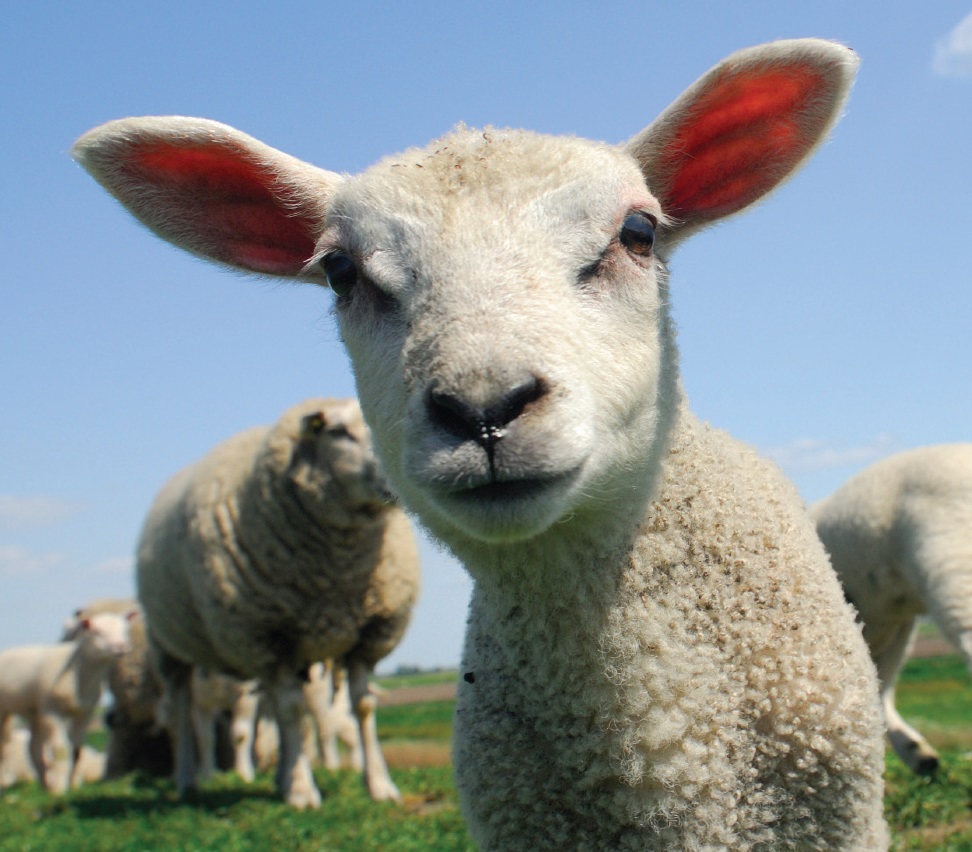Not a baa-a-a-d product
Evan Zabawski | TLT From the Editor September 2009
Originally a wool waste product, lanolin is used in more than 3,000 cosmetic formulations.

Lanolin’s name comes from the Latin lāna, meaning wool, and oleum, meaning oil.
www.canstockphoto.com
One of the strangest things I learned in my post-secondary education came from a random conversation about shaving. I complained that I found shaving very uncomfortable, especially the application of any aftershave (picture Macaulay Culkin in the classic scene from Home Alone). A classmate told me the best aftershave lotion he had found was Oil of Olay—a women’s beauty cream! Desperate for relief, I tried it and have been using it religiously for the past 15 years, though not twice a day as the old slogan advised.
When the inventor of Oil of Olay, Graham Wulff, was perfecting his beauty fluid in the 1950s, he prescribed its properties to be “…as close as possible to skin sebum. Something that would penetrate rapidly, be compatible with the skin, remain stable, restore and hold moisture, while protecting the skin and leaving the surface with a supple, matte finish, 10 minutes after application.”
Sebum is the oily secretion from the sebaceous glands, found below the skin and near hair follicles, that lubricates skin and coats hair. In humans, sebum is mostly triglycerides, wax esters and squalene; in sheep, sebum is a product called lanolin, from the Latin lāna=wool plus oleum=oil.
Lanolin has water-repellency, antibacterial and antifungal properties. After shearing, wool is washed in a process called scouring that removes grease, vegetable matter and manure. The lanolin is separated centrifugally from the wash water, originally as a waste product, and now is processed into a variety of products.
Wulff found that lanolin fit the bill perfectly as the base for his fluid, in fact the name “Oil of Olay” itself was a spin on the word lanolin. Nivea Crème, created in 1911, had already been using lanolin but as an emulsifying agent. Barbasol shaving cream, created in 1921, also used lanolin to create a less irritating shave. Interestingly, many baseball players swear by the practice of breaking in new baseball gloves with shaving cream, but they probably don’t realize all they need is lanolin-based leather preservative.
Lanolin has many uses beyond beauty creams. The FDA has lanolin registered in nearly 3,000 different cosmetic formulations like diaper rash creams, baby oils, eye creams, breastfeeding nipple creams, hemorrhoid medicines, shampoos, lipstick, face powders, foundation and makeup removers.
Medical-grade lanolin is used as an ointment base due to its ready absorption. In anhydrous form it is used as a corrosion inhibiting coating in shipping and oil rig applications. It can be used underwater as an antifouling agent for ship hulls or as an outdoor sealant for wood decks and fences. As a lubricant it can be used on brass musical instruments and zippers and on chains, cables and ropes and even as an antiseize product.
We have been spinning wool into yarn since about 10,000 B.C., but is wasn’t until ancient Greeks’ time that Pedanius Dioscorides documented the use of lanolin, or Oesypus as he called it, in his five-volume pharmacopeia
Regarding Medical Matters. It’s nice to know we have been recovering a waste stream for so long—ketchup is another favorite waste product of mine, but that’s a topic for another day.
Lanolin, popular as skin cream, actually is an ecologically friendly oil. It’s non-toxic, naturally occurring and from a renewable resource, albeit from a limited supply.
So if you ever shake hands with a sheep shearer and wonder why his hands are so soft, now you know.
 Evan Zabawski, CLS, is a training and consulting specialist for The Fluid Life Corp. in Edmonton, Alberta, Canada. You can reach him at evan@fluidlife.com
Evan Zabawski, CLS, is a training and consulting specialist for The Fluid Life Corp. in Edmonton, Alberta, Canada. You can reach him at evan@fluidlife.com.